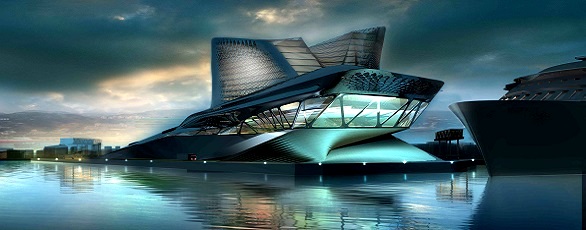Environmental Impact Assessment for the Creation of a Lake in a Touristic Development Villages-A Case Study
Pages : 1094-1109Download PDF
Tourism activity in Sharm el-Sheikh is considered the main economic base for the development of coastal areas in South Sinai Governorate, Egypt. The proposed Lake aims to create a romantic beach life with suitable conditions for bathing, water sports and other recreational uses of the touristic Resort with an efficient and economical manner. The surface area of the lake is about 30 feddans, and the amount of water stored in the lake is estimated at 111,000 m3. The lake is well designed according to local conditions in Sharm El Sheikh and international standards. The objective of this study is to prepare Environmental Impact Assessment (EIA) methodology that follows the instructions of the Ministry of Environment. The EIA methodology used in this assessment is based on the method of calculating impact. This assessment has been prepared using approved methods (e.g. Sampling methods, collection of archival, and field data), taking into account the requirements identified by the groundwater sector of the Ministry of Water Resources and Irrigation. The procedures required to evaluate the exploitation of groundwater, drainage effects on the saline groundwater, and the receiving environment have been followed in accordance with the requirements of the Ministries of Irrigation and the Environment. The purpose of this study is to assess the effect of the proposed lake on the surrounding environment, with emphasis on the extent of the impact of the groundwater sources, and the dependence of the lake in the recharge water on saline groundwater as well as drainage in the same groundwater environment. A detailed study of previous relevant studies on natural resources and the natural environment carried out close to the proposed site, with attention to groundwater resources in the Sharm El Sheikh area and around the proposed site of the lake, included a number of studys on groundwater assessment and internal studys at Nabq and the Ministry of the Environment. Environmental impact assessment studys and studies have been reviewed for similar projects in the study area and surrounding areas. A list of references is provided at the end of this study. The information used in this assessment was based on the following: [Review previous studies and research -Technical specifications of lakeand operating elements – Hydrographic data collected during the drilling of feed and drainage wells – Field visit to the proposed site and analysis of water samples and soil – Interpretation of topographical maps, aerial photographs, and satellite images – Professional judgment based on long experience in the region and similar studies]. The study concluded that the proposed Lake study aims at creating the life of the beach with suitable conditions for bathing and other recreational uses of the Resort in an efficient and economical manner. The lake has been well designed according to local conditions in Sharm El Sheikh and international levels and the sensitivity of the surrounding marine and terrestrial ecosystem is considered. The proposed lake is not connected directly or indirectly to the sea. The lake will be fed by saline groundwater and drainage in the underground reservoir with a closed system. There is no significant difference between seawater salinity and the salinity of the original groundwater used in nutrition and wastewater from the operation of the lake.
Keywords: Environmental Impact Assessment – Mitigation Measurements – Environmental Management Plan – Touristic Development Areas – Rescreational Lakes – Water Resources – Ground Water Wells





